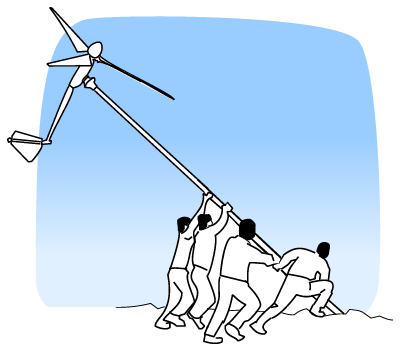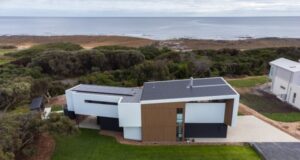
If you’re considering wind power as an option, there are a few questions you’ll need to be able to answer to make sure it’s right for your needs, and to ensure you know what to look for.

If you’re considering wind power as an option, there are a few questions you’ll need to be able to answer. Wind’s an excellent source of sustainable, free energy, but it does require certain conditions in order for it to be practical – and a more suitable option than solar.
Is wind right for me?
The first thing you’ll need to consider is whether wind power is suitable in your area. For a wind turbine to be worth setting up, you need an average wind speed of over 5m/sec (18km/hr). Ideally, you will have an open location without any surrounding buildings – preferably on the coast or away from any built-up areas. You can get an idea of your local area’s wind strength by using wind maps which can be found on the internet.
Specific measurements for your location that have been recorded with an anemometer are recommended though, as the initial outlay for a turbine system can be high, and it’s best not to leave this kind of thing to chance! Bear in mind a typical turbine can be upwards of 20 metres off the ground where winds are stronger, so even if the wind doesn’t feel strong from your backyard, it may be a different story up where the turbine’s likely to sit.
Assess your power needs
Next, you need to decide how much power you want your system to generate. Using your power bill is the easiest way to find out your average daily energy consumption. Once you know that, you can choose to offset all or part of your needs with wind power. Different turbines will help you generate different amounts of energy – and as you’d expect, higher capacity turbines will cost more.
Regardless of whether you’re using it as a supplement to an existing grid connection or a standalone power source, it’s a good idea to have a battery bank too so that you have a steady supply of renewable energy even when the weather goes flat.
Find the right spot
You can find the best places on your property for a wind turbine using an anemometer, but as a rough guide the best place is likely to be high up in a wide open space, well away from large obstacles that are likely to cause wind buffering and turbulence. Another ideal place for a wind turbine is at the top of a hill. As wind sweeps up the hill it compresses against itself and accelerates, creating concentrated, fast-moving wind.
Wherever you’re hoping to install your turbine, you’ll also need to clear the plans with the local council – and very likely any neighbours within eyeshot or earshot of it. This may involve projections related to noise, and to other environmental impacts created by the turbine.
Choose the right hardware and installer
Once you know how much power you want and have a suitable site chosen, you’ll need to get some quotes from suppliers. Reliable, sturdy equipment is worth paying extra for, as this will reduce the need for ongoing maintenance. Do some research and shop around – the cheapest option is very unlikely to be the most sensible one! You should select a reputable supplier and installer with a solid track record – one that will be able to back its warranty ten or twenty years down the track should anything go wrong.
Surprisingly, there aren’t many enforceable Australian Standards in the small wind industry, though any grid connected components must comply with AS4777 – Grid connection of energy systems via inverters and AS3100 – Approval and test specification – General requirements for electrical equipment. Your installer should be licensed to connect your system to the mains grid, and supply a certificate of electrical safety, as well as any other paperwork you might require.





